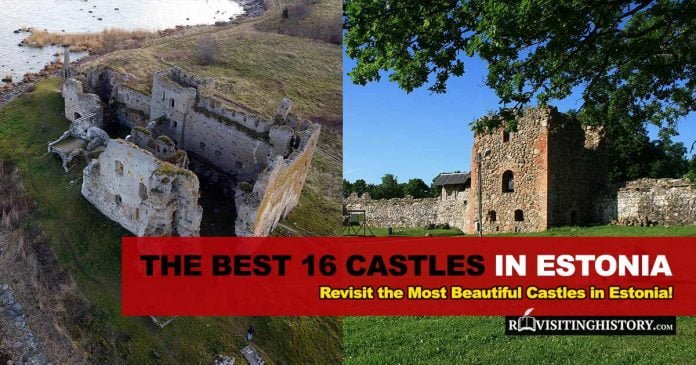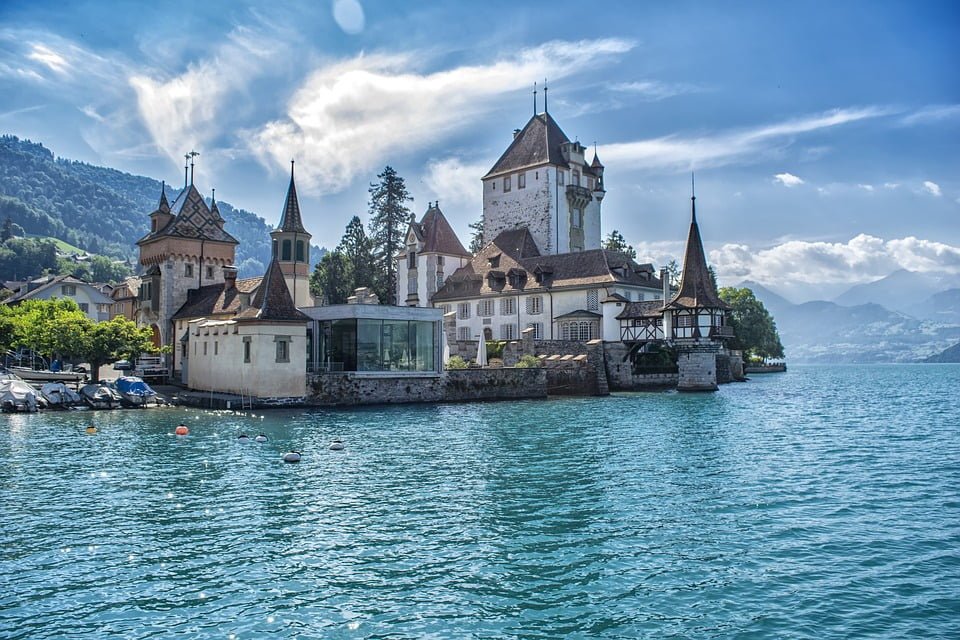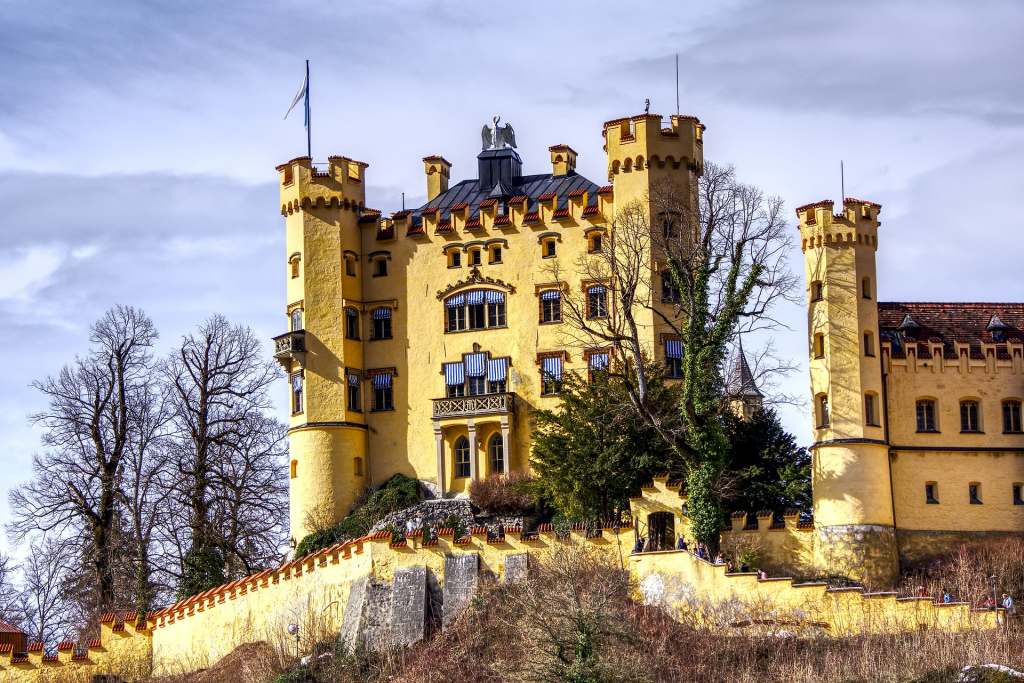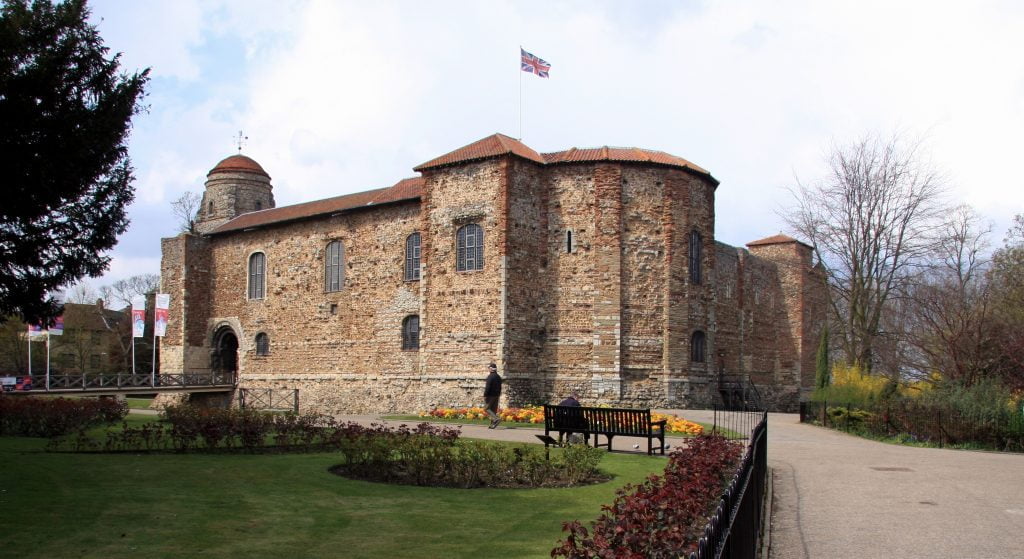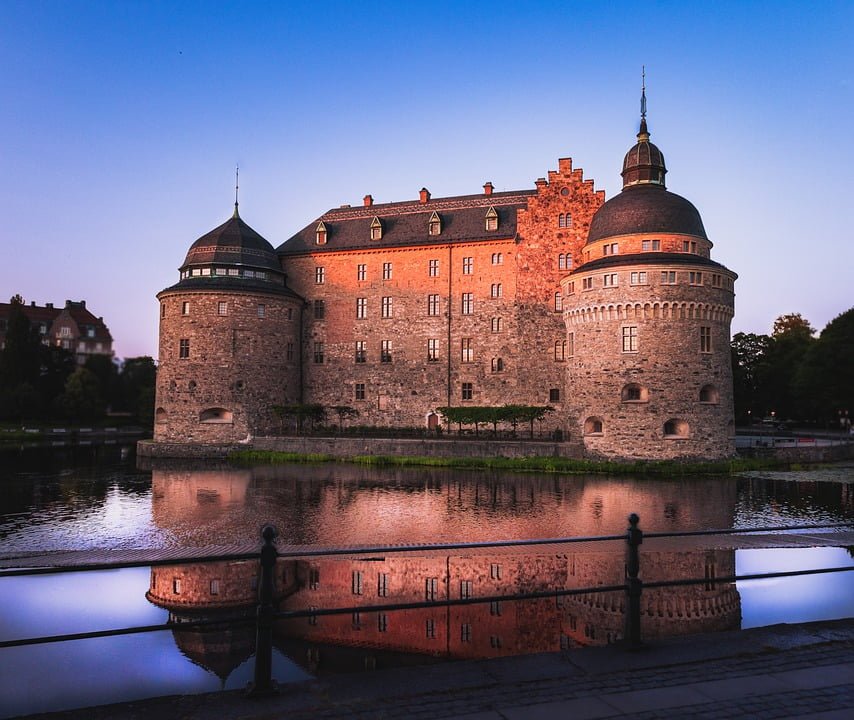Peaceful landscapes, ancient historical landmarks, and a captivating atmosphere describe a little of what awaits travelers when visiting the beautiful country of Estonia! Over 2000 islands form part of the country, known for its clean Baltic air. Estonia is rated a high-income country with rapid, continued technological advancement, and it is regarded as a safe destination to visit and explore.
We have summarized sixteen of the most visited historical and cultural sites in Estonia, to give you more insight into this wonderful place and perhaps interest you in planning a trip to visit this delightful part of the world!
Table of Contents
10 Most Popular Castles to Visit in Estonia
The order of the list is based on Google search volume of each castle = popularity.
1. Toompea Castle
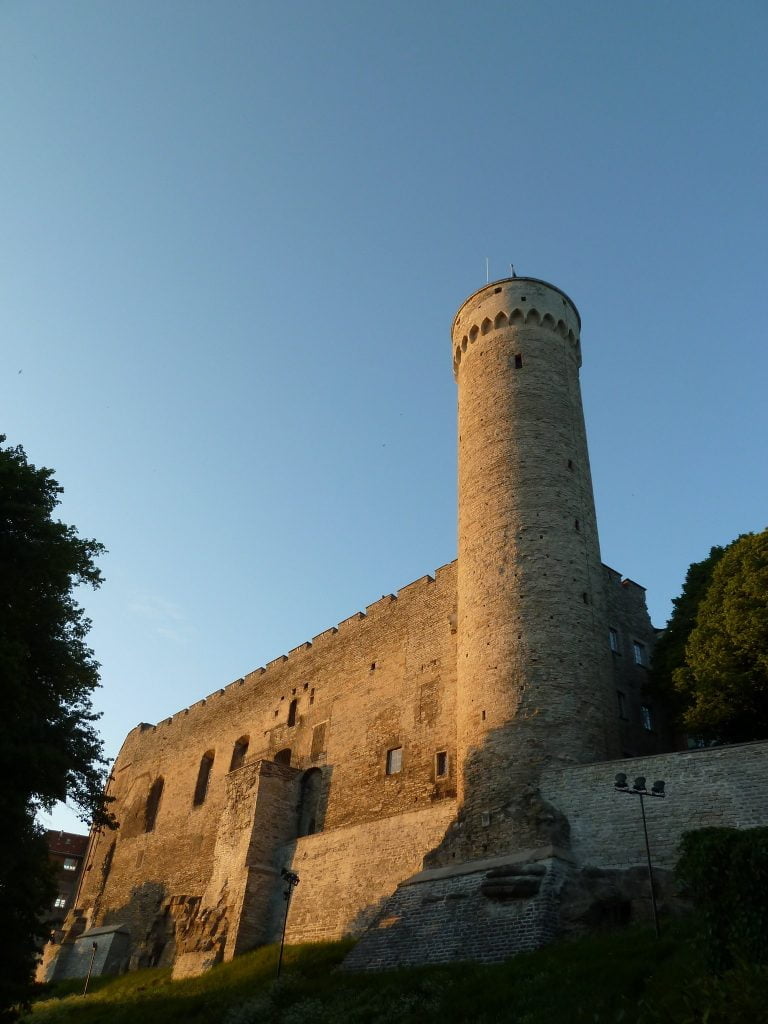
Impressive and magnificent, Toompea Castle is a popular tourist destination. Situated on Toompea Hill in Tallinn, the capital city of Estonia, this ancient site is rich in history and culture. The site also serves as the seat of the Estonian Parliament, known as Riigikogu, in the present day.
The castle complex was constructed during the 13th and 14th centuries, under Danish rule. The stately parliament building was added in the 20th century. The castle’s lineage of owners includes the Order of the Brethren of the Sword, the Teutonic Order, the Swedes, and the Russian Empire. Since Estonia declared independence in 1918, it remains the Estonian government headquarters.
With informative guided tours available at the castle compound, and even a view of the Estonian Parliament going about important stately work, Toompea Castle is a great experience for visitors!
- Location: Toompea, Estonia
- Time built: 13th & 14th centuries
- Architectural style: Danish Medieval
- Touring: Allowed. Visit the official website for more information.
2. Tartu Castle
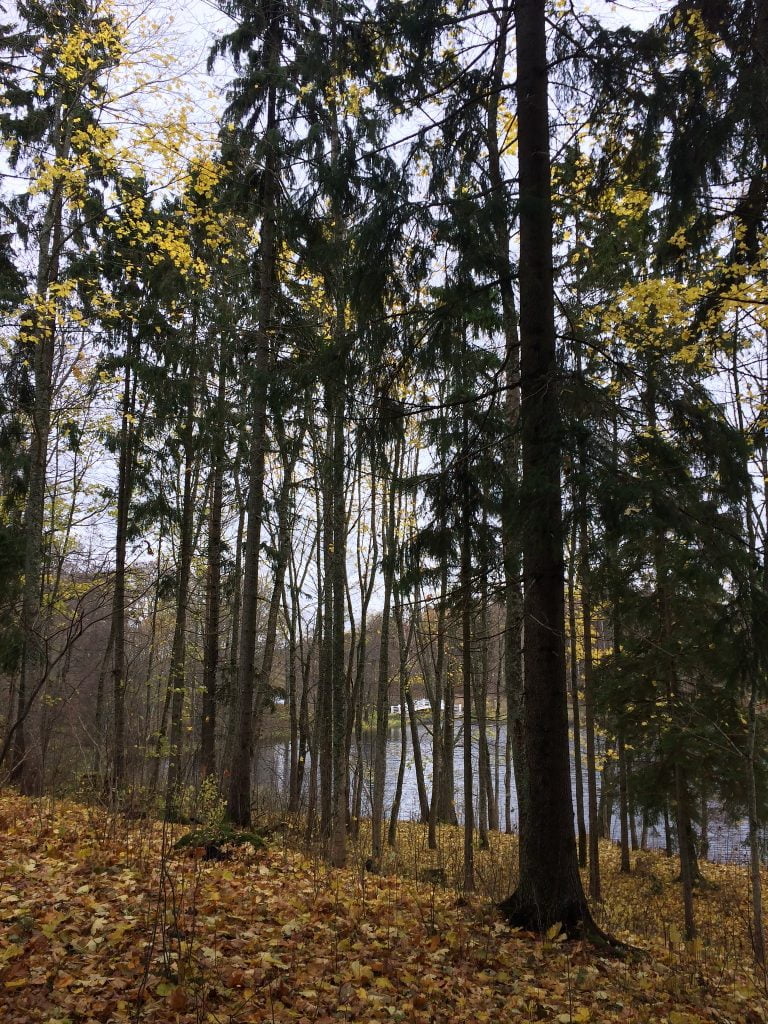
Tartu Castle no longer stands, yet the site where it stood draws great numbers of history enthusiasts every year. Formerly situated on a hill in the town of Tartu, little is known about the full castle structure layout, making it even more intriguing to visit.
Tartu Castle, also known as Bishop’s Castle, was built in the early 13th century. It withstood invasion in 1262 from the Novgorod army, but subsequently sustained extensive damage during the 16th century Livonian War, and again in the 18th century Great Northern War. When the city was rebuilt after the war, Tartu Castle was demolished.
All that remains to be seen of Tartu Castle on the hill site are remnants of the brick and stone walls. There is no fee to access the ruins, tourists may walk around and experience the ancient castle site’s nostalgia at their leisure.
- Location: Tartu, Estonia
- Time built: 13th century
- Architectural style: Medieval
- Touring: Allowed. Visit the official website for more information.
3. Põltsamaa Castle
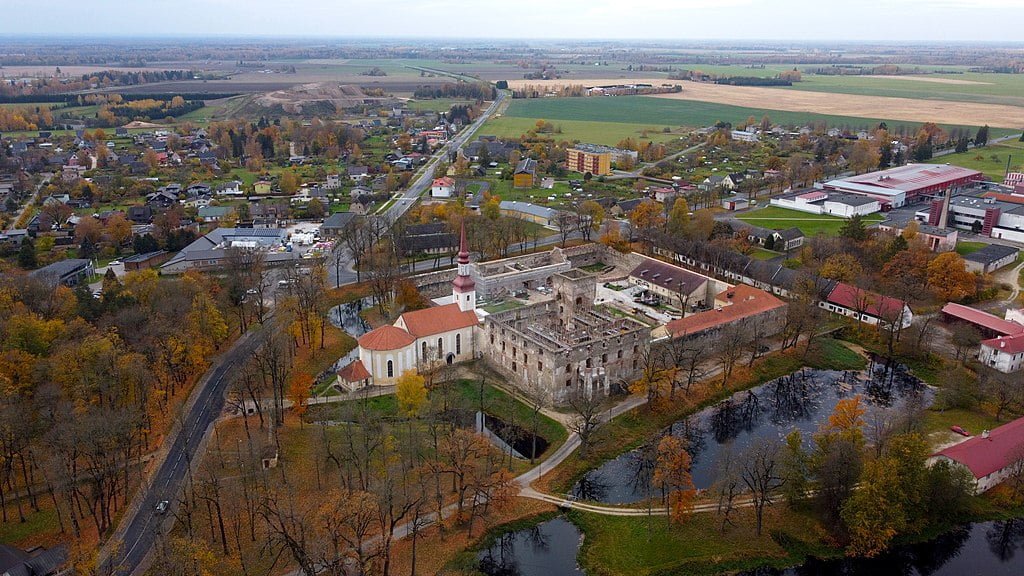
A visit to Põltsamaa Castle will reveal an ancient site which has existed since the 13th century, built by the Livonian Order. Originally constructed as a fortress, the castle site’s history is fascinating to explore.
The castle is situated in the town of Poltsamaa, in Jogeva county, and is also known as Põltsamaa Order Castle. Found on the shore of Põltsamaa River, the completely moated castle has been ruled by the Livonian Order, the Swedes and the Russians. During World War II, the castle was completely obliterated during a bomb attack.
Today, the stone ruins are a popular destination for tourists. There are guided tours available, while the church and a few of the annexes have been reconstructed. You are able to visit the museum, art gallery, food museum and a winery at the site, and experience the local culture.
- Location: Põltsamaa, Estonia
- Time built: 1272
- Architectural style: Medieval
- Touring: Allowed. Visit the official website for more information.
4. Alatskivi Castle
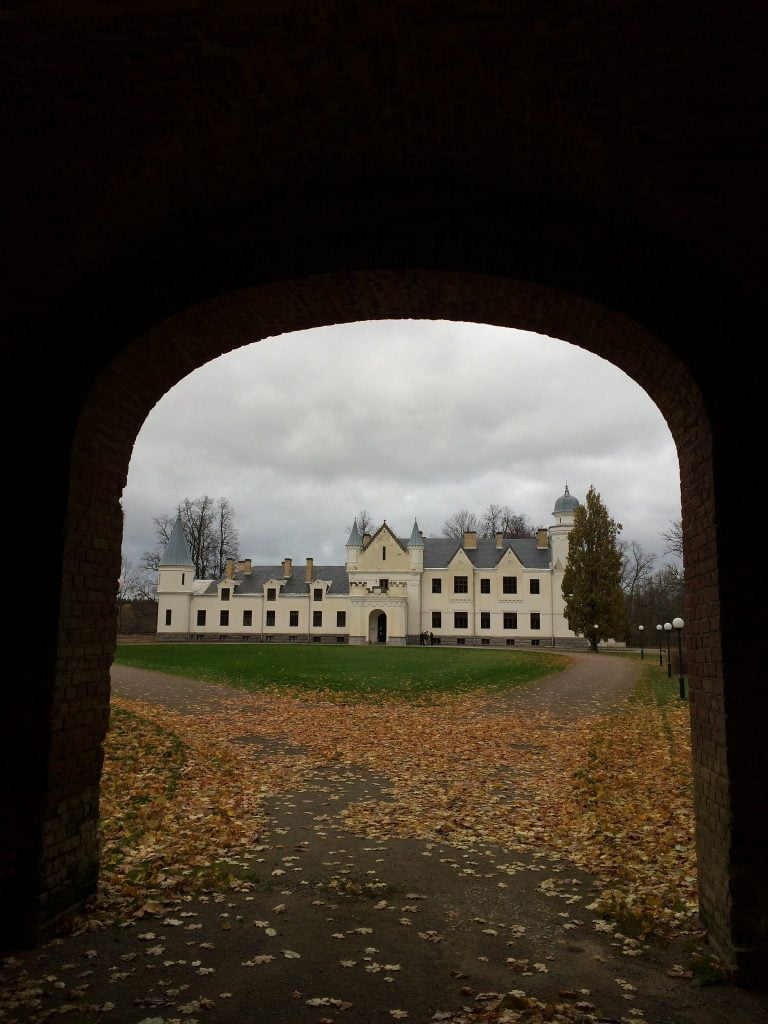
Enter through an inviting archway to arrive at picturesque Alatskivi Castle. Situated in Tartu County in Alatskivi Parish, this castle is a popular reconstructed tourist destination believed to have been erected in the early 17th century as a manor house. The castle was reconstructed in the 19th century to resemble the Neo-Gothic design of Balmoral Castle, the popular royal residence in Scotland.
Since renovation work at the castle site was completed in 2011, the castle is open to the public under the management of the Alatskivi Castle Foundation. Tourists are able to enjoy ghostly dinners in the castle and partake in activities such as hiking, bicycle touring and wine tastings. A visit to the Eduard Tubin Museum in the castle is fascinating and informative.
- Location: Alatskivi Parish, Tartu, Estonia
- Time built: 17th century, reconstructed 19th century
- Architectural style: Neo-Gothic
- Touring: Allowed. Visit the official website for more information.
5. Hermann Castle
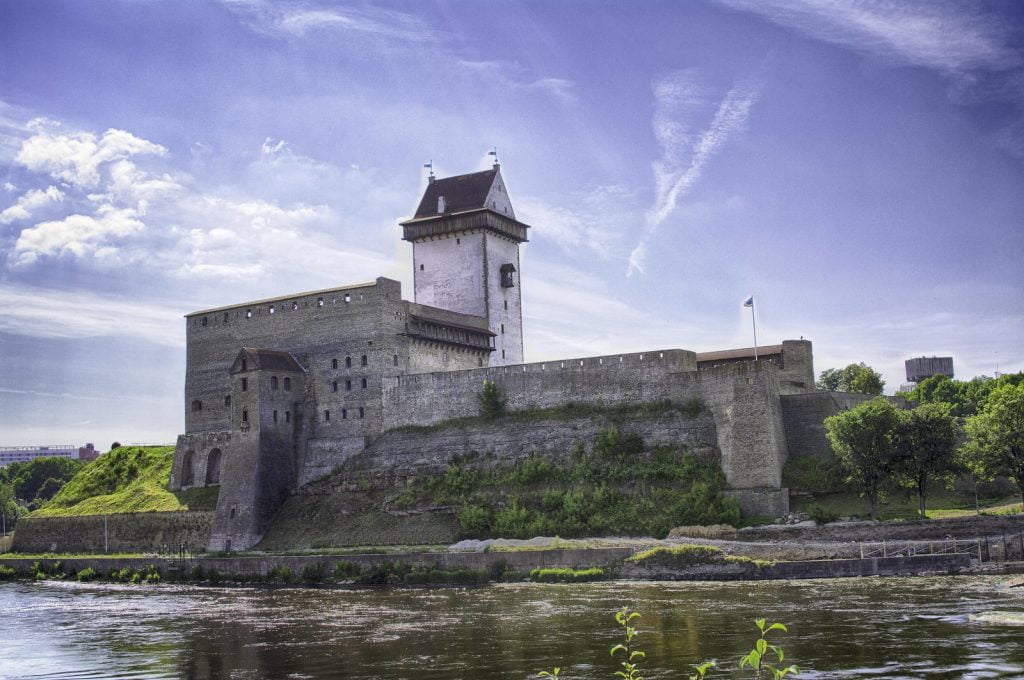
Hermann Castle is a fascinating ancient site, with historians disagreeing about the time of its construction. The castle is also known as Narva Fortress and is arguably the most well-preserved fortification in all of Estonia.
Believed to have been established under Danish rule in around 1256, construction of a stone fortification followed in the early 14th century. Acquired by the German Livonian Order in 1346, it was governed over the subsequent centuries by the Swedes and Russians–today it is Estonian state property.
The Narva Museum is housed in the castle building and features informative exhibits detailing the centuries old history of the castle and the town. The castle site also offers visitors the opportunity to learn about and even take a crack at local and traditional handicraft methods, in the northern yard craft workshop at the castle compound.
- Location: Narva, Estonia
- Time built: 1256
- Architectural style: Medieval
- Touring: Allowed. Visit the official website for more information.
Revisit More Historic Places Below or Read Further
6. Rakvere Castle
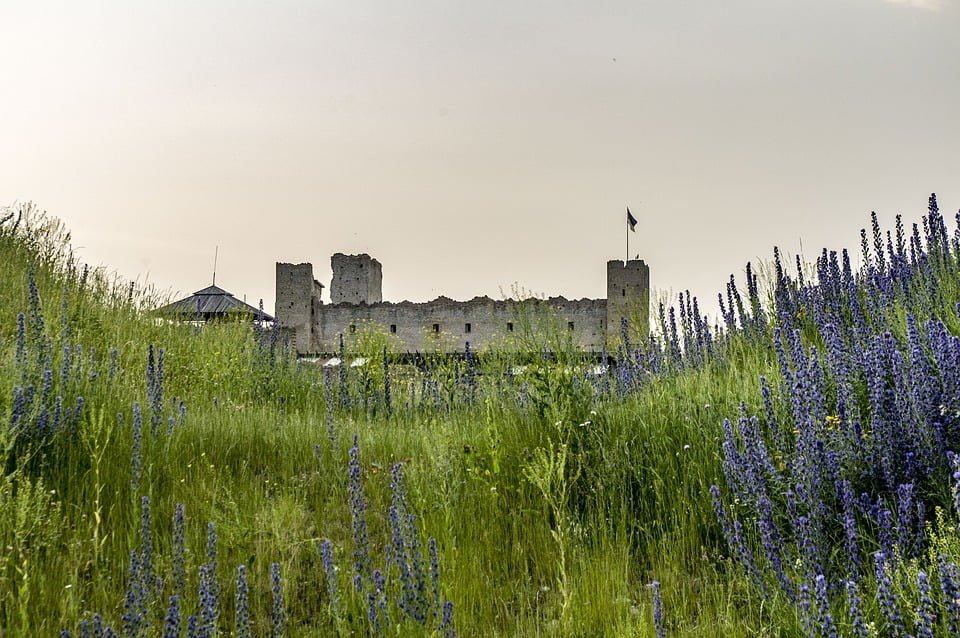
The Rakvere Castle ruins are an adventure worth experiencing. The ruins of the ancient castle site are situated in the town of Rakvere, the capital of Laane-Viru County.
Dating back to around the 5th and 6th centuries, the castle was not rebuilt since it sustained damage during the first part of the 17th century, when it was bombed by Poland and then by Sweden.
In the present day, the ruins are open to the public and provide tourists with a fun-filled way to experience the culture and traditions of the area. Several activities developed to recreate ancient, medieval times are available for visitors to partake in and the ruins site caters to all age groups. Authentic medieval dining is available at Shenkenberg Tavern in the castle. There is also a torture chamber, medieval alchemist’s workshop, and a wine cellar to visit.
- Location: Rakvere, Estonia
- Time built: 5th & 6th centuries
- Architectural style: Medieval
- Touring: Allowed. Visit the official website for more information.
7. Viljandi Castle
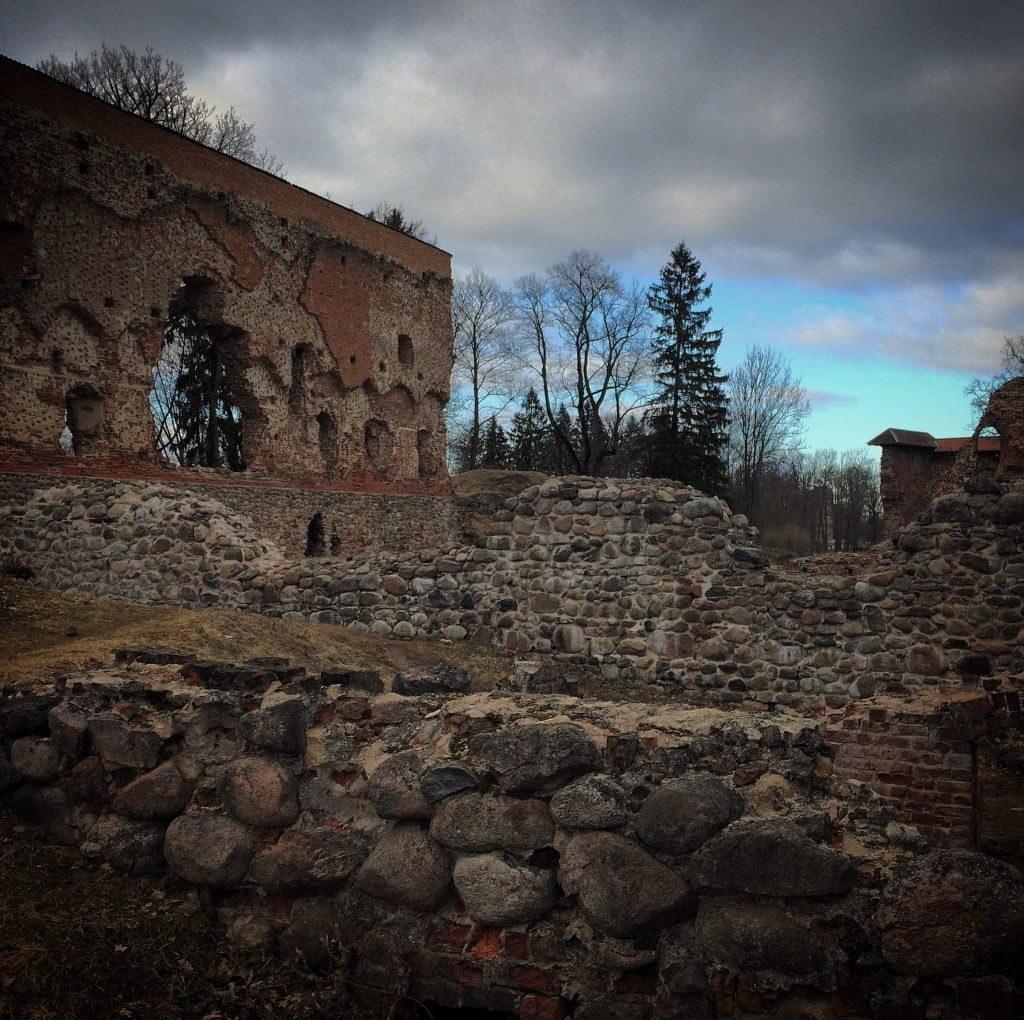
The ruins of Viljandi Castle stand proud near the middle of the town of Viljandi. Built around 1224 by the Livonian Order, the castle was constructed over the foundations of a former fortress structure. Further work was completed at the site in the early 16th century.
The stone fortification was damaged during conflict in the region by Swedish, Polish and Russian invaders. The castle site was not restored, only remnants of the stone fortress walls remain today. Archeological excavation work at the site has been ongoing in recent decades, with the first excavations having taken place in 1878-1879.
A visit to the castle ruins provides tourists with a majestic view overlooking Lake Viljandi. The castle ruins and the surrounding park area were converted into a leisure and entertainment area for visitors. The site is a popular destination for history and culture enthusiasts from around the world!
- Location: Viljandi, Estonia
- Time built: 1224, 16th century
- Architectural style: Medieval
- Touring: Allowed. Visit the official website for more information
8. Karksi-Nuia Castle
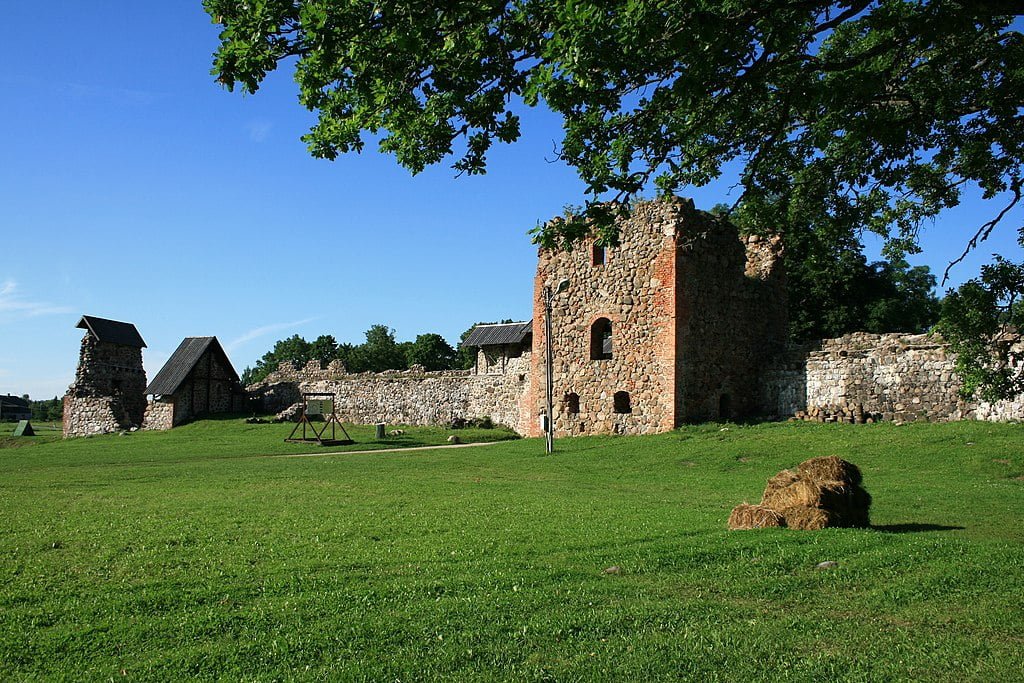
The Karski-Nuia castle ruins are shrouded in mystery. With uncertainty as to when the castle was built, it is generally believed that at some point during the Middle Ages the fortification was erected in the city of Karksi-Nuia in Viljandi County. But they remain unfinished until the Teutonic Order took over during the 14th century–with bricks and rough, uneven stone wedges. Further construction was done in the 15th century, and in 1730, a sepulchral chapel was added followed by the construction of the Baroque style St. Peter’s Church during the 1770s. The castle was severely damaged during the Great Northern War and never reconstructed.
In the present day, the ruins are mostly used as the background for various sporting and cultural activities and events. The Karski-Nuia ruins are open to the public to visit throughout the year.
- Location: Karski-Nuia, Estonia
- Time built: Middle Ages
- Architectural style: Medieval
- Touring: Allowed. Visit the official website for more information.
9. Helme Castle
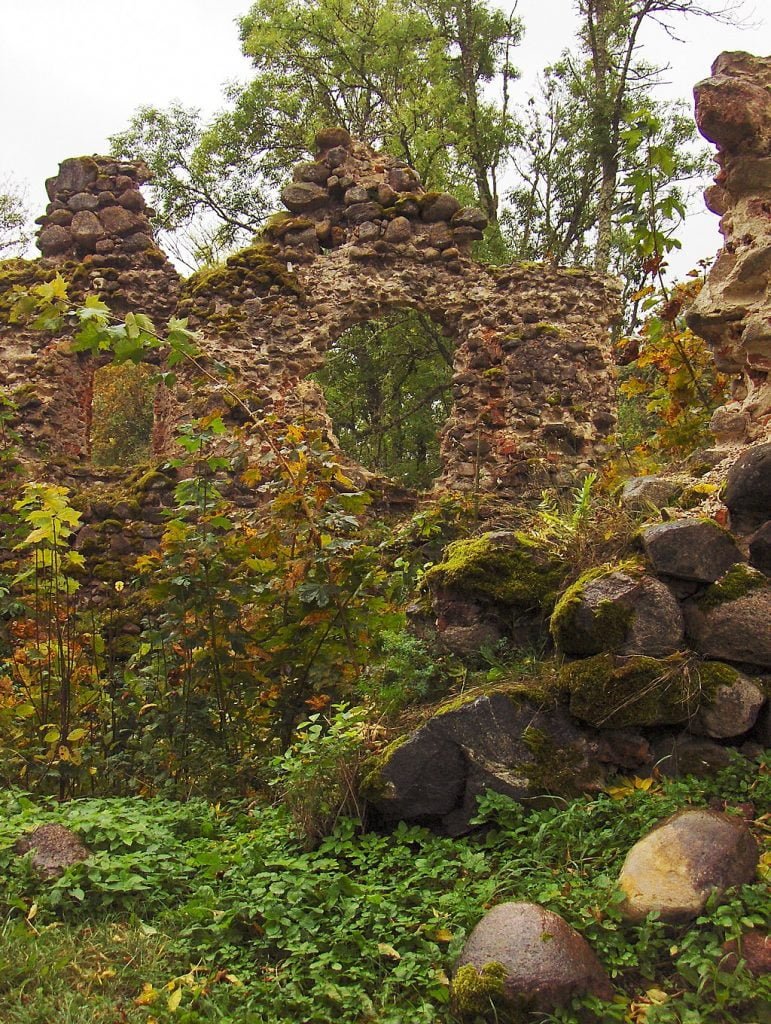
The ruins of Helme Order Castle stand atop a steep hill in Helme, by the Parnu-Valga Road in Torva Parish, Valga County. Tourists have to walk up the road leading to the castle ruins to experience the scenery and majestic views.
The castle is believed to have been constructed during the 14th century, by the Livonian Order. The castle was demolished by the Swedes in 1658 and never rebuilt. Research at the site has revealed that the castle was probably oval-shaped and encapsulated by two moats. Only remnants of the high walls with window openings are left at the site.
The medieval Helme Order Castle ruins are open to the public and visitors enjoy walking through the surrounding wooded area. Legend has it that the water at the Doctor’s Spring, in the valley at the base of the ruins, can heal some sicknesses!
- Location: Helme, Estonia
- Time built: 14th century
- Architectural style: Medieval
- Touring: Allowed. Visit the official website for more information.
10. Keila Castle
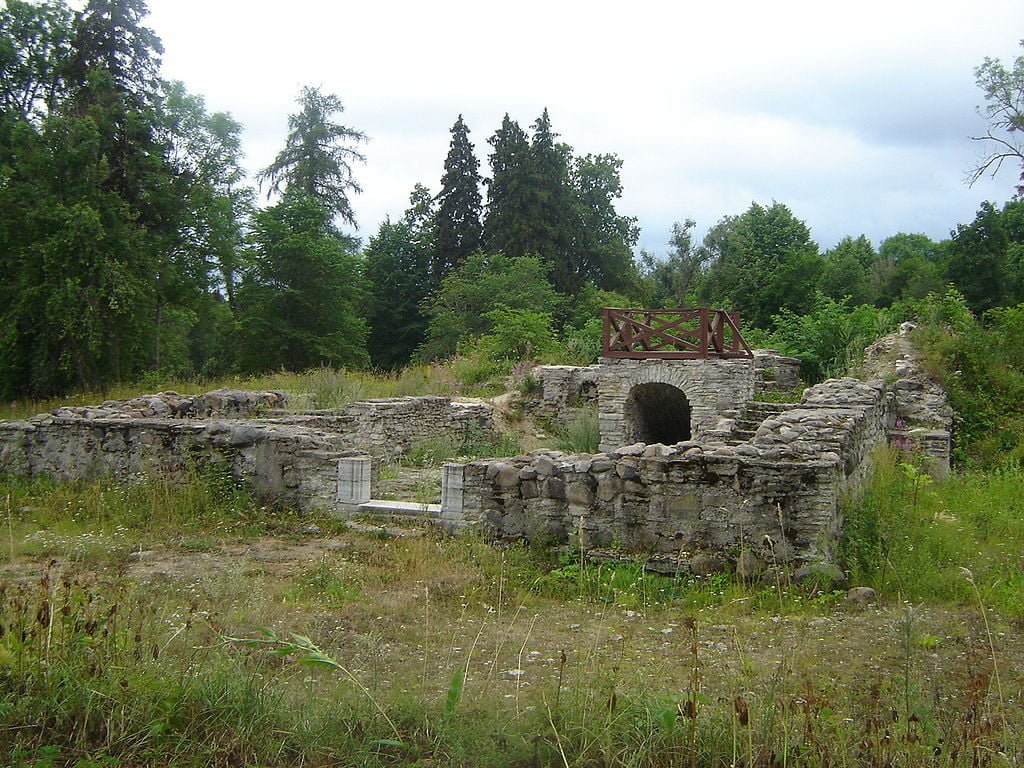
The Keila Castle ruins are situated in the urban municipal town of Keila, in Harju County. The site is close to the Estonian capital city of Tallinn. The castle was built as an unimposing fort structure by the religious Livonian Order.
While it is uncertain when exactly the fortress was erected, it is believed to have been built in the period between the 15th and 16th centuries, which coincided with the settlement of a smallish community in the area. The population diminished during the Livonian Order and the castle were left in ruins.
Today, the fortress ruins remain to be seen, surrounded by green wooded land. Archeological excavations were started at the site in 1976, and continued on until 2007.
- Location: Keila, Estonia
- Time built: Middle Ages
- Architectural style: Medieval
- Touring: Allowed. Visit the official website for more information.
Planning to Visit Nearby Countries? Check Out These Best Castles Lists:
6 Less Popular Castles Worth Visiting While In Estonia
If you are a castle enthusiast, you must take out the time to visit these equally spectacular castles in Estonia as well:
11. Laiuse Castle
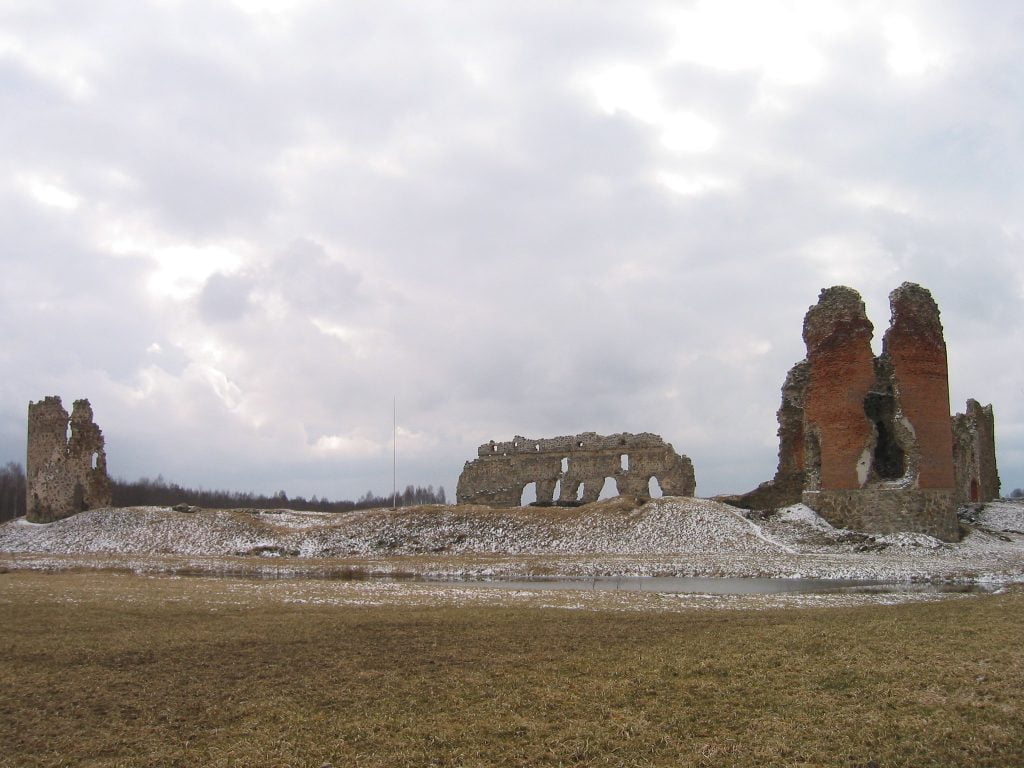
The ruins of Laiuse Castle are situated in Jogeva Parish, in Laiusevalja. The site was the first fortification with firearms to be constructed in Estonia.
It is believed that the Livonian Order most likely started constructing the oldest portion of the site in the 14th century. The castle has a history of being damaged then rebuilt and once again damaged and left in ruins … until it was not rebuilt.
Currently, the fortress ruins are open to the public throughout the year. Events are held during the summer; in winter, the fortress is used to host snow battles.
- Location: Laiusevalja, Estonia
- Time built: Middle Ages
- Architectural style: Medieval
- Touring: Allowed. Visit the official website for more information.
12. Paide Castle
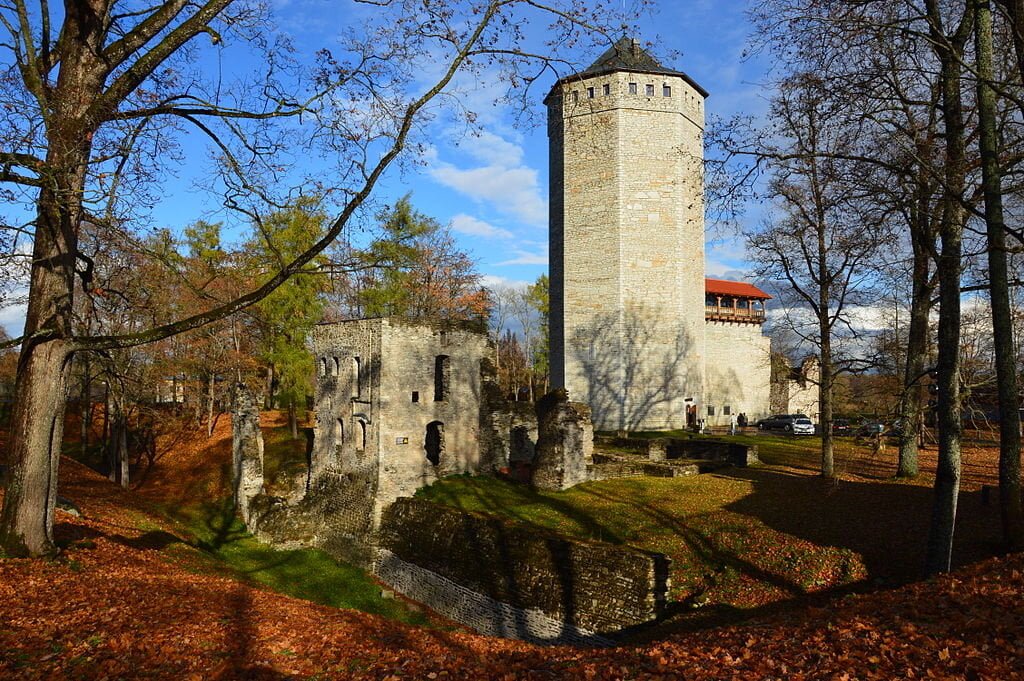
Paide Castle is a 13th century castle, situated in the capital of Jarva County, Paide. Construction of the site was commissioned by the Livonian Order in 1265. The castle was built around the central 5-story tower, known as Tall Hermann Tower.
The castle site has a detailed history of additional construction projects and modifications throughout the centuries. In the present day, the castle and museum in the building are open to the public. Certain sections of the site have been renovated, including the central tower, which is occupied by a portion of the Jarva County Museum.
- Location: Paide, Estonia
- Time built: 13th century
- Architectural style: Medieval
- Touring: Allowed. Visit the official website for more information.
13. Pärnu Castle
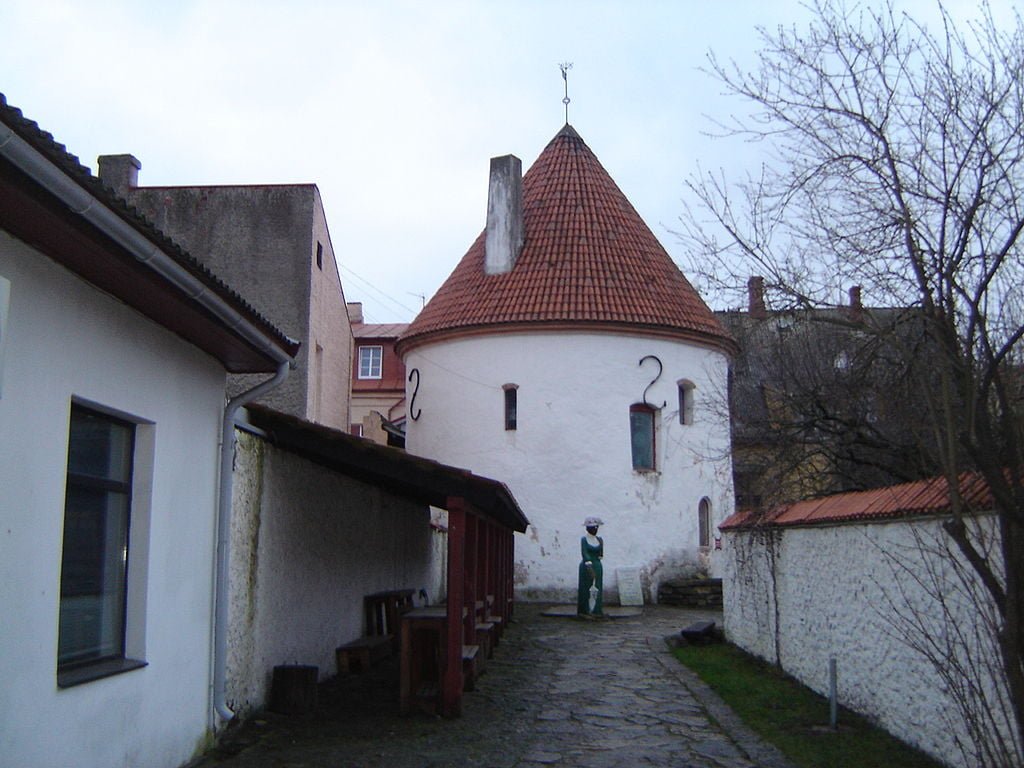
Parnu Castle was a medieval castle built by the Teutonic Order in the city of Parnu in the 13th century. The castle was maintained up to its destruction in the Polish-Swedish war and today, only the Red Tower (also known as Prison Tower) of the former castle remains.
The Red Tower is occupied by an information center for visitors. Tourists are able to walk through the tower and learn about the ancient New Parnu town and the architectural styling of the structure.
- Location: Tarnu, Estonia
- Time built: 15th century
- Architectural style: Medieval
- Touring: Allowed. Visit the official website for more information.
14. Rõngu Castle
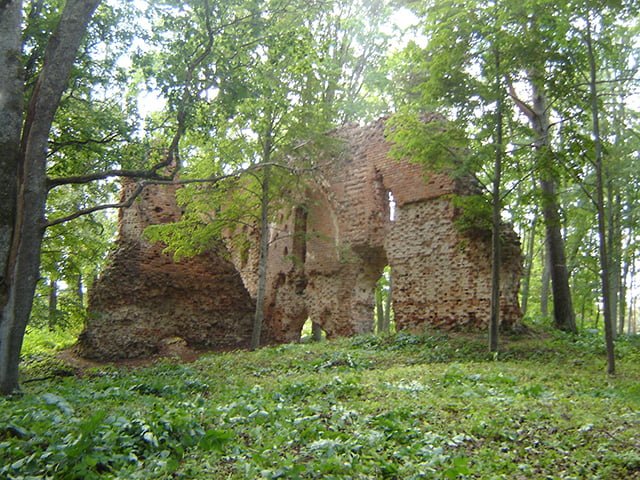
Constructed after 1340, Rongu Castle is a medieval ruin in the village of Rongu, part of Tartu County’s Elva Parish. The castle site was constructed around an inner rectangular shaped courtyard with surrounding wing structures.
Ransacked during the Livonian War by the Russian invaders, the castle remained standing. Eventually used by the Jesuits, they later destroyed it rather than have the Swedes take over during wartime. Nowadays, the ruins are open to the public yeararound. Surrounded by a wooded area, remnants of the fortified walls and the main entrance gate remain to be seen.
- Location: Rongu, Estonia
- Time built: 14th century
- Architectural style: Medieval
- Touring: Allowed. Visit the official website for more information.
15. Toolse Castle
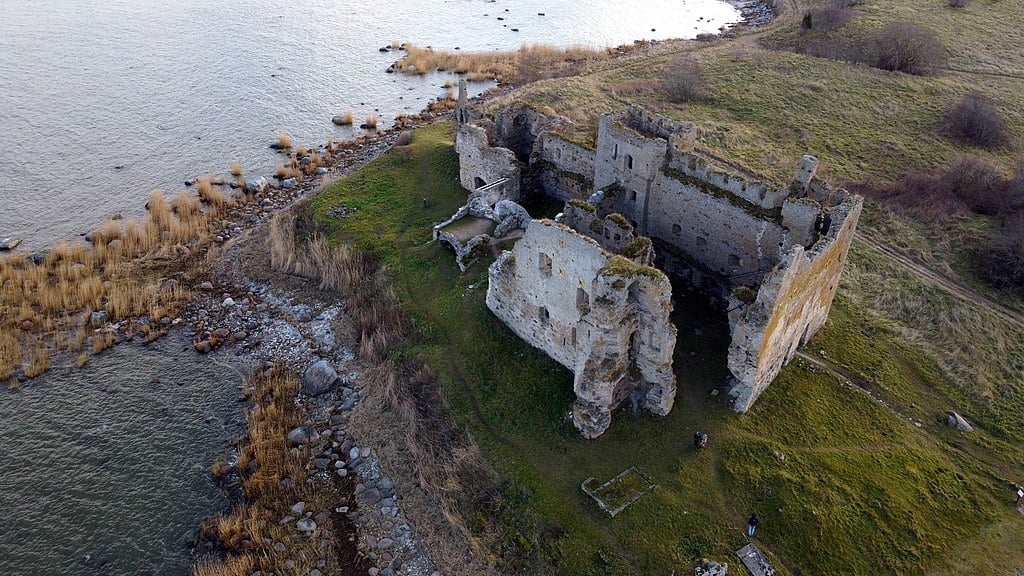
Also known as Toolse Order Castle, this site was erected by the Teutonic Order and completed around 1471.
The fortress’ location made it ideal to protect the port and accompanying trade routes of the region. The castle fell under Swedish rule, and was left in ruins after sustaining severe damage during the Great Northern War.
There are tours available as well as day trips to explore the ruins and learn about the history of the site. Visitors are also able to arrange activities such as treasure hunts.
- Location: Toolse, Estonia
- Time built: 15th century
- Architectural style: Medieval
- Touring:Allowed. Visit the official website for more information.
Revisit More Historic Places Below or Read Further
16. Vasknarva Castle
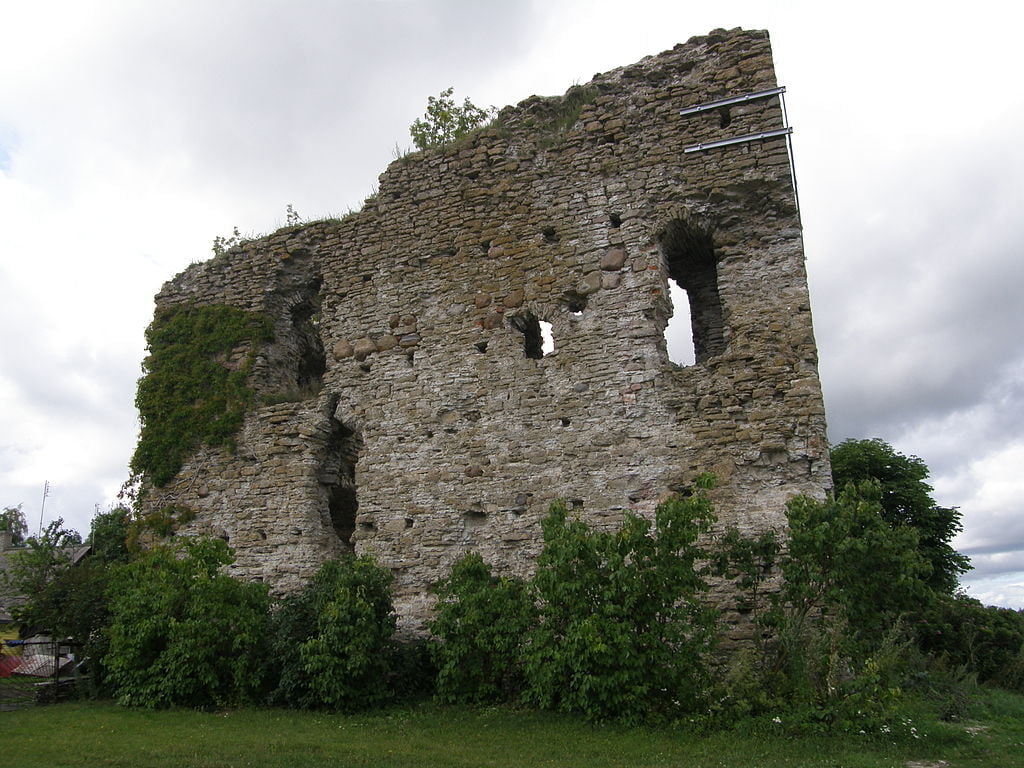
The Vasknarva Castle ruins stand in the village of Vasknarva, part of Ida-Viru County. Believed to have been completed in around 1349 by the Livonian Order, the castle only existed for a year before it was obliterated.
A rebuilding project began in 1427, the new castle did not survive the Livonian War and there was little mention of the castle ruins during the later Great Northern War.
Today, only the castle ruins remain to be seen. Open to the public yeararound, remnants of the fortified, almost ten-foot thick walls are all that remain.
- Location: Vasknarva, Estonia
- Time built: 14th century, rebuilt 15th century
- Architectural style: Medieval
- Touring: Allowed. Visit the official website for more information.
Planning to Explore Europe? Check Out These Best Castles Lists:
Conclusion
Growing in popularity as a tourist destination, Estonia provides visitors with modern amenities whilst combining historic adventures. With rich traditions, fabulous culinary delights, and welcoming locals, the country has established itself as a true European gem. Plan a trip to gorgeous Estonia, and experience the magnificent scenery, extensive history, and fascinating culture first-hand!

